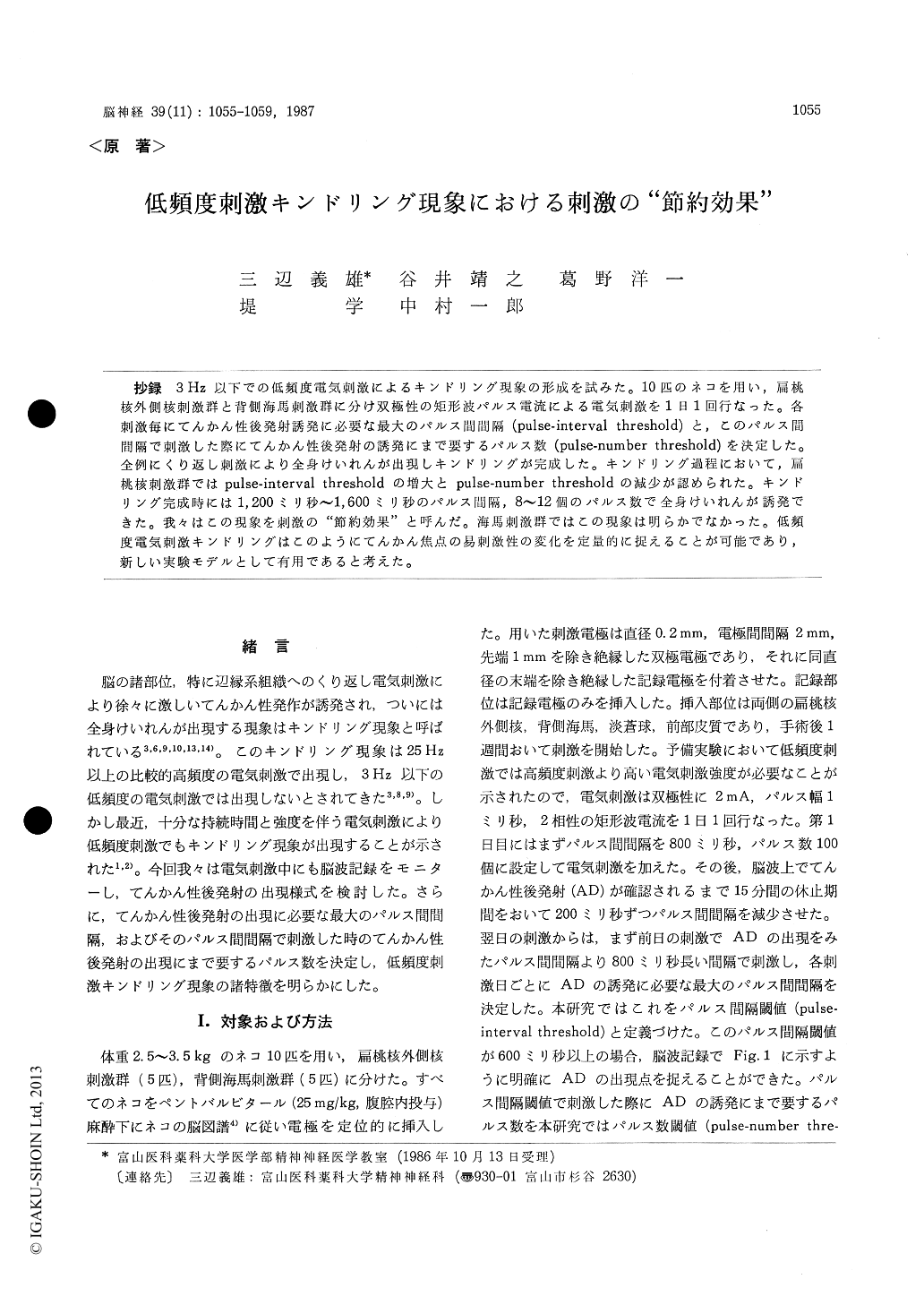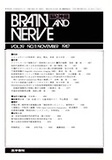Japanese
English
- 有料閲覧
- Abstract 文献概要
- 1ページ目 Look Inside
抄録 3Hz以下での低頻度電気刺激によるキンドリング現象の形成を試みた。10匹のネコを用い,扁桃核外側核刺激群と背側海馬刺激群に分け双極性の矩形波パルス電流による電気刺激を1日1回行なった。各刺激毎にてんかん性後発射誘発に必要な最大のパルス間間隔(pulse-interval threshold)と,このパルス間間隔で刺激した際にてんかん性後発射の誘発にまで要するパルス数(pulse-number threshold)を決定した。全例にくり返し刺激により全身けいれんが出現しキンドリングが完成した。キンドリング過程において,扁桃核刺激群ではpulse-interval thresholdの増大とpulse-number thresholdの減少が認められた。キンドリング完成時には1,200ミリ秒〜1,600ミリ秒のパルス間隔,8〜12個のパルス数で全身けいれんが誘発できた。我々はこの現象を刺激の"節約効果"と呼んだ。海馬刺激群ではこの現象は明らかでなかった。低頻度電気刺激キンドリングはこのようにてんかん焦点の易刺激性の変化を定量的に捉えることが可能であり,新しい実験モデルとして有用であると考えた。
To assess the developement of kindling effect induced with low frequency electrical stimulations, we stimulated the lateral amygdala (AM group, 5 cats) and the dorsal hippocampus (HP group, 5 cats) bipolarly, once a day, with 2 mA base to peak, biphasic 1 msec square-wave pulses. In each stimulation we measured the longest inter-pulse interval required for the provocation of epileptic afterdischarge (AD), defined as the pulse-interval threshold ; and the number of stimulating pulses required for the provocation of AD at this pulse-interval, defined as the pulse-number threshold. The observed behavioral seizures were classified into 6 stages in both the AM and HP group according to the conventional classification. In the AM group, an increase of the pulse-interval threshold and a decrease of the pulse-number threshold were observed during the kindling process. At the completion of kindling, a genera-lized convulsion was provoked with 1,200-1,600 msec pulse-intervals, and with 8-12 stimulating pulses. In the HP group an increase of the pulse-interval threshold and a decrease of the pulse-number threshold were observed in the early seizure stages, but not so significantly as the AM group. In the late seizure stages, a decrease of the pulse-interval threshold and an increase of the pulse-number threshold were observed. The observed behavioral stage of seizures in the two groups were similar to that of the conven-tional high-frequency kindling. We referred to the fact, that epileptic seizures were induced with a lower stimulation-frequency and fewer stimula-tion-pulses during the amygdaloid kindling pro-cess, as the "saving-effect" of stimulating pulsesrequired to induce epileptic seizures. We suppose that the "saving-effect" in the low-frequency kindling, as well as the reduction of the intensity of electrical stimulation required for the induc-tion of AD in the conventional high-frequency kindling, might indicate an increase of the excitability of epileptic focus during the kindling process. We also suppose that the "saving-effect" was not so significantly observed in the HP groupas in the AM group, because an inhibitory me-chanism might have developed overwhelming an excitatory one at the epileptic focus during the hippocampal kindling process. Finally we suggest that low-frequency kindling might provide a useful technique for the assessment of the excitability of the epileptic focus itself.

Copyright © 1987, Igaku-Shoin Ltd. All rights reserved.


